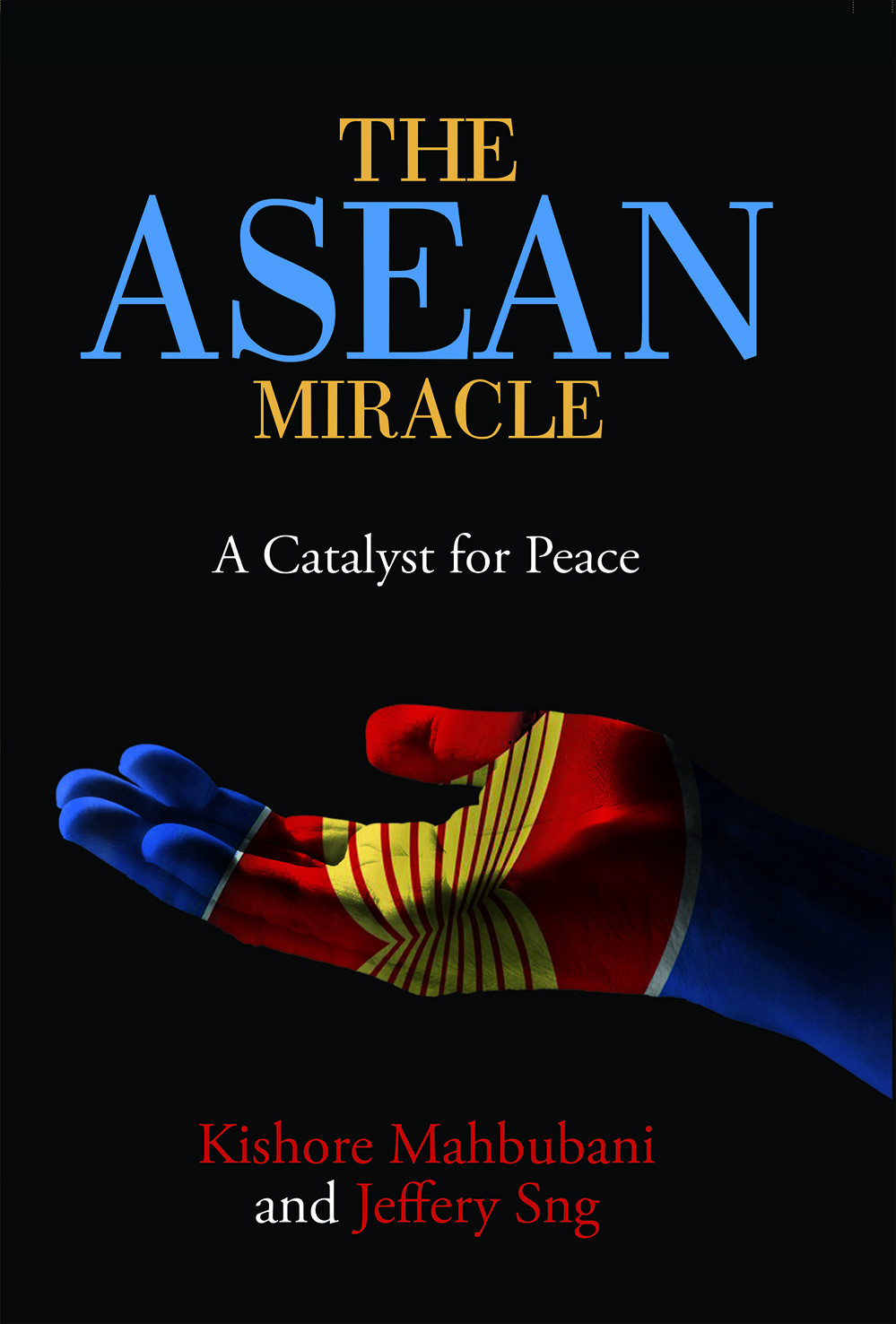That’s the central message of a new book, The ASEAN Miracle: A Catalyst for Peace, co-authored by former diplomats Kishore Mahbubani and Jeffery Sng.
Mahbubani and Sng even go so far as to make the bold claim that ASEAN should have won a Nobel Peace Prize years ago.
After all, if one were to travel half a century back in time, one would likely arrive at the conclusion then that Southeast Asia’s prospects were not at all great.
The Vietnam War, the Communist threat, the dramatic separation of Singapore from Malaysia, hostilities during Konfrontasi, and growing Cold War tensions all seemed to point toward a region characterised by political turmoil and mutual distrust -- not peace.
To complicate matters, how could one realistically expect the world’s most culturally, religiously, linguistically, and ethnically diverse region to ever find common ground?
The two men should know.
After all, both Sng and Mahbubani lived through some of ASEAN’s most turbulent times and saw its miraculous transformation: Sng has been residing in Thailand for over three decades, while Mahbubani’s former diplomatic postings included Cambodia (from 1973 to 1974, amid intense civil conflict) and Malaysia (from 1976 to 1979, at a time when the wounds of Separation were still raw).
Imperfect success
While Mahbubani and Sng are unabashedly critical of Western observers for a lack of understanding of ASEAN, they are also honest in their introspection:
These stories [of the many imperfections of ASEAN] are not wrong. ASEAN never progresses in a linear fashion. It often moves like a crab: it takes two steps forward, one step backwards and one step sideways. Viewed over a short period, progress is hard to see.
They then go on to argue:
Yet miraculously, when one takes a longer view, analysing progress decade by decade, ASEAN’s forward progress becomes visible. Despite its many imperfections, it keeps moving forward.
And in a fitting conclusion, the authors postulate:
If such an imperfect corner of the world can deliver both peace and prosperity to its 625 million citizens, the rest of the world can surely replicate ASEAN’s imperfect record. This is the ultimate paradox of the ASEAN story: its strength lies in its imperfection.

The causes
Mahbubani and Sng distill ASEAN’s track record of peace to five key factors.
First, the fear of Communism, especially in the 1960s and 70s, which generated political cohesion and solidarity amidst ASEAN’s social diversity.
Second, the role of “a stellar cast” of strong leaders with “spines of steel”, such as President Suharto of Indonesia, Prime Minister Lee Kuan Yew of Singapore, Prime Minister Mahathir Mohamad of Malaysia, and Foreign Minister Siddhi Savetsila of Thailand, especially during the most formative period of ASEAN’s history.
Third, geopolitical luck – specifically, favourable timing and orientation of events during the Cold War which enabled ASEAN to benefit from the strong support of great powers like the US and China.
Fourth, the embracing of market-oriented economic policies that allowed ASEAN to integrate with the thriving East Asian economic ecosystem and take advantage of global trade.
Fifth, the establishment of regional and extra-regional networks that helped replicate (and in so doing reinforce) the incipient sense of community, along with a tried-and-tested process of consultation and consensus, among ASEAN members.
The book
For a 232-pager, The ASEAN Miracle: A Catalyst for Peace is an unsuspectingly comprehensive read that is accessible even to those untrained in the oftentimes opaque nature of international relations.
Mahbubani’s and Sng’s storytelling, which offers a blend of history and analysis, offers few surprises. The book’s thesis is unequivocal from the outset, at times even repeated to death.
And yet, just as the authors acknowledge that ASEAN will “succeed imperfectly”, the book, too, imperfectly succeeds at putting forward a compelling argument for ASEAN’s enduring value – not only to its members, but also as a thriving example of civilisational coexistence that the world would do well to emulate.
One might only wish that more effort had been put into strengthening the book’s appeal to younger readers, perhaps by helping them make sense of historically-dense sequences through visual archives, graphic illustrations, or contemporary references.
If anything, Mahbubani’s and Sng’s position on the matter and their structured, methodical approach should not overshadow the fact that The ASEAN Miracle: A Catalyst for Peace provides a balanced account of ASEAN over the past 50 years. Beyond merely conducting a stock-take of the regional grouping’s successes, the authors reflect on its weaknesses and what they think it needs most moving forward.
At the very least, you’ll get enough context and clarity to fuel your next dinner table conversation. (In addition to bite-sized “pen sketches” of every ASEAN member’s inextricable connection to ASEAN, there is also a deep recognition of ASEAN’s relationship with its external environment, demonstrated through a full chapter on ASEAN and the Great Powers.)
Or, as Mahbubani and Sng hope, enough inspiration to convert you into an ardent supporter, willing and excited to take greater ownership of ASEAN’s future.
Either way, we sure hope the Norwegian Nobel Committee is listening.

The ASEAN Miracle: A Catalyst for Peace is published by National University of Singapore Press and retails at just $24. Get a copy here or at leading bookstores.
Alternatively, refer to the comments section of our Facebook post for details of our giveaway.
Top image is a screengrab from here.
If you like what you read, follow us on Facebook and Twitter to get the latest updates.
If you like what you read, follow us on Facebook, Instagram, Twitter and Telegram to get the latest updates.
